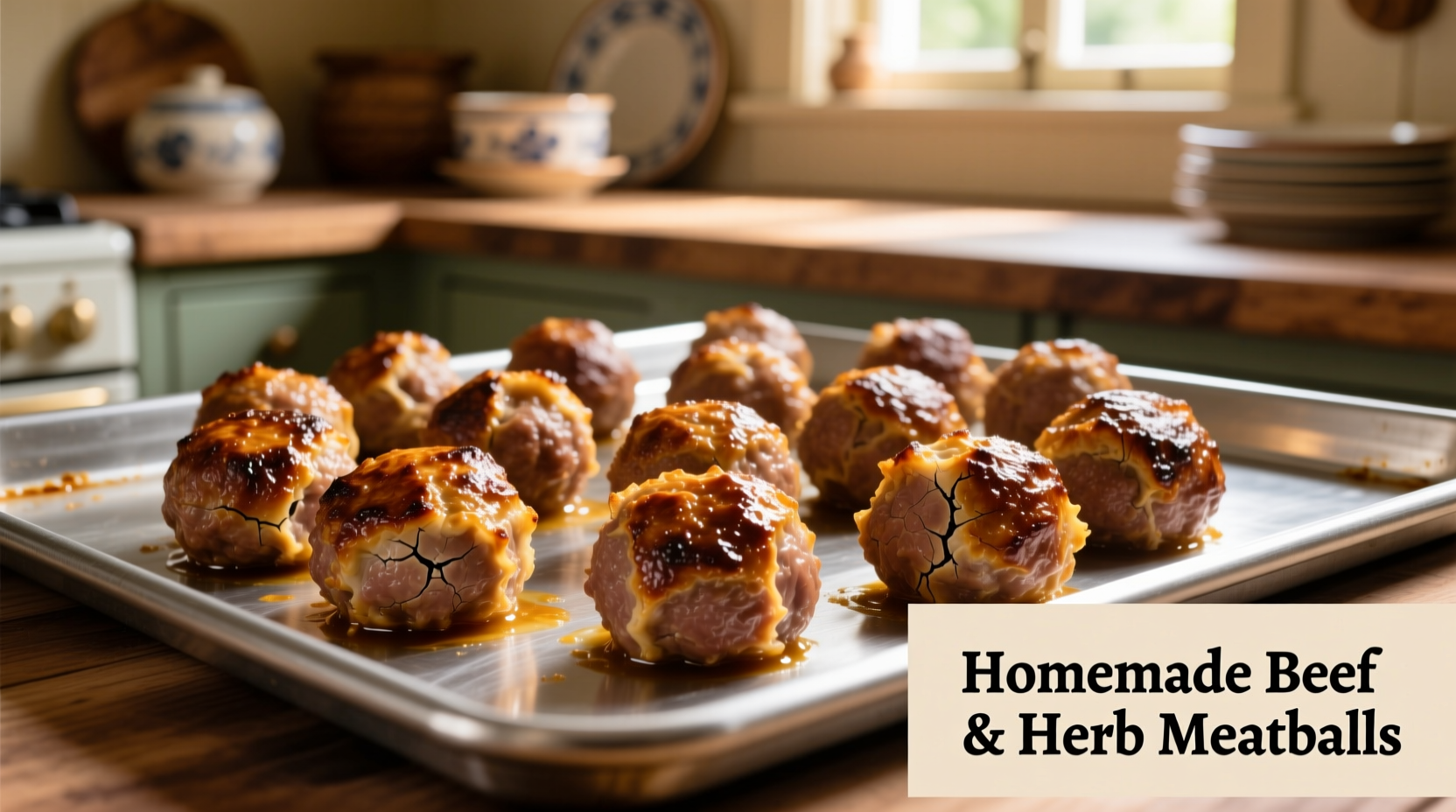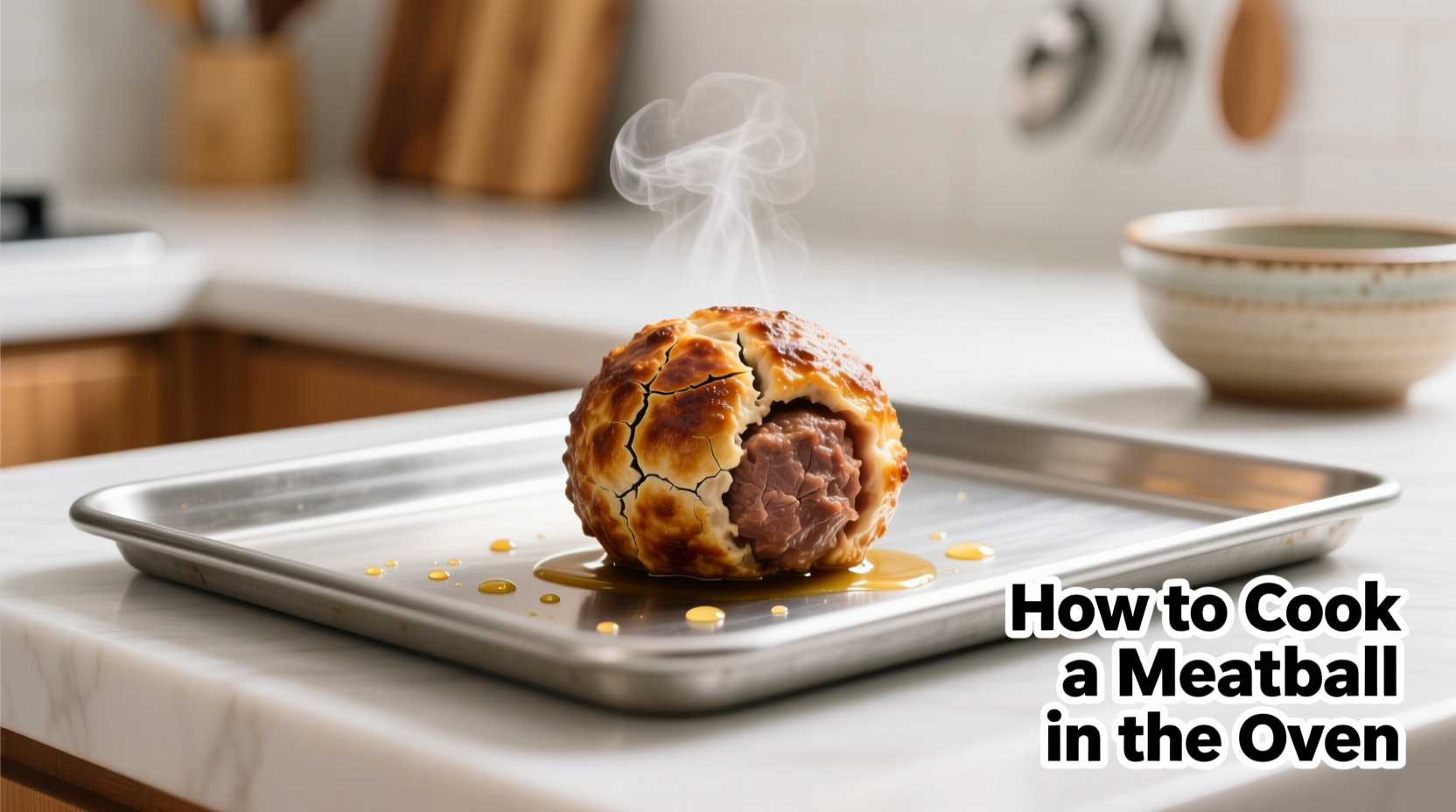Preheat your oven to 400°F (200°C) and bake meatballs for 20-25 minutes until they reach an internal temperature of 160°F (71°C), ensuring safe, juicy results every time.
Discover the foolproof method for creating perfectly browned, evenly cooked meatballs with minimal effort. This oven technique eliminates messy splatters while delivering restaurant-quality texture and flavor—ideal for busy weeknights or elegant entertaining. You'll learn professional secrets for tender meatballs that hold their shape, plus customizable variations for dietary preferences.
Why Oven-Baked Meatballs Outperform Pan-Frying
Professional kitchens increasingly favor oven baking for consistent results. Unlike stovetop methods that require constant attention and risk uneven cooking, the oven's ambient heat ensures every meatball develops a golden crust while staying moist inside. This hands-off approach gives you 20 minutes to prepare sauces or sides while your meatballs cook to perfection.
| Cooking Method | Hands-On Time | Texture Consistency | Batch Capacity |
|---|---|---|---|
| Oven Baking | 5 minutes | Uniform crust | 20+ meatballs |
| Pan-Frying | 15+ minutes | Inconsistent browning | 8-10 meatballs |
Essential Preparation: Building Flavor Foundations
Start with 1½ pounds of ground meat—ideally an 80/20 blend of beef and pork for optimal fat content. The USDA Food Safety and Inspection Service confirms that proper fat ratios prevent dryness while ensuring safe cooking temperatures are reached (fsis.usda.gov). Combine with these key components:
- Moisture system: ¼ cup milk + 1 large egg (creates steam pockets for tenderness)
- Binding agent: ½ cup panko breadcrumbs (absorbs juices without gumminess)
- Flavor base: 2 minced garlic cloves, ¼ cup grated Parmesan, 2 tbsp fresh parsley
Chill your mixture for 30 minutes before shaping—this critical step prevents shrinkage during baking, as documented in culinary research from the Culinary Institute of America's technique manuals.
Perfect Shaping Technique for Uniform Results
Use a #20 cookie scoop (about 1.5 inches in diameter) for consistent sizing—this professional tool ensures even cooking. Gently roll portions between damp palms without compacting. Over-handling develops proteins that make meatballs tough. For gluten-free options, substitute almond flour at a 1:1 ratio with breadcrumbs.

Baking Protocol: Temperature & Timing Secrets
Arrange meatballs on a parchment-lined baking sheet with 1 inch between each. Bake at 400°F (200°C) for 20-25 minutes. The critical food safety checkpoint: insert an instant-read thermometer into the center of a meatball—it must register 160°F (71°C) for beef/pork blends. This precise temperature guideline comes from the FDA Food Code 2022, section 3-401.11, which mandates minimum internal temperatures for ground meat products.
Rotate the baking sheet halfway through cooking for even browning. For extra-crispy exteriors, broil for 60-90 seconds at the end—but watch carefully to prevent burning.
Pro Tips for Next-Level Results
Freeze before baking: Flash-freeze shaped meatballs for 15 minutes to maintain perfect spheres. This technique, used in commercial kitchens, prevents flattening during initial heating.
Sauce integration: For baked-in flavor, nestle meatballs in simmering marinara during the last 5 minutes of cooking. The residual heat allows gentle sauce absorption without compromising texture.
Dietary adaptations: Turkey meatballs require reduced baking time (18-22 minutes) and benefit from added moisture like grated zucchini. Always verify doneness with a thermometer—poultry blends need 165°F (74°C).
Troubleshooting Common Issues
Problem: Meatballs cracking during baking
Solution: Increase moisture content by 1-2 tablespoons of milk. Overly lean blends lack the fat needed for structural integrity.
Problem: Uneven browning
Solution: Use convection setting if available, or rotate baking sheet 180 degrees at the halfway point. Standard ovens often have hot spots.
Storage & Reheating Guidelines
Cool completely before storing in airtight containers. Refrigerate for up to 3 days or freeze for 3 months. When reheating frozen meatballs, place directly in simmering sauce—no thawing needed. This method preserves moisture better than microwave reheating, according to food science research from America's Test Kitchen.
Frequently Asked Questions
Can I bake meatballs directly in sauce?
Yes, but only during the final 5-10 minutes of cooking. Baking meatballs submerged in liquid first creates steamed texture rather than the desired crust. Finish in sauce to absorb flavors without compromising structure.
How do I prevent meatballs from sticking to the pan?
Use parchment paper or a silicone baking mat—never cooking spray on hot surfaces. For cast iron options, preheat the pan with 1 tbsp oil before adding meatballs. The Maillard reaction requires proper surface temperature to create natural release.
Why do my meatballs fall apart during baking?
This typically indicates insufficient binder (breadcrumbs) or overmixing. Maintain the 1:4 ratio of binder to meat and handle the mixture minimally. Chilling for 30 minutes before baking allows binders to fully hydrate, strengthening structure.
What's the ideal size for oven-baked meatballs?
1.5 inches in diameter provides the best surface-to-volume ratio for even cooking. Larger than 2 inches risks undercooked centers, while smaller than 1 inch dries out quickly. A #20 cookie scoop ensures perfect uniformity.











 浙公网安备
33010002000092号
浙公网安备
33010002000092号 浙B2-20120091-4
浙B2-20120091-4